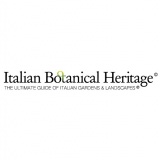
 Italian Botanical Heritage
Italian Botanical Heritage
Italian gardens and parks: Villa Fracanzan Piovene
- WTI Magazine #173 Mar 16, 2024
-

 Italian Botanical Heritage
Italian Botanical Heritage
Villa Fracanzan Piovene, historical residence of the Fracanzan family, is at the center of a large complex of ancient buildings in the Vicenza province, Veneto. It was built in 1700 by Francesco Muttoni, a baroque architect, with vague references to the Palladian architecture in the main facade and with baroque finishes.
The whole garden area is fenced by walls and has large prospective avenues and two fishponds long more than 500 meters which fit between forests and cultivated areas. In 1700 the “menagerie” was designed and built to leave free the animals. In front of the villa is the formal garden with hedges of boxwood (Buxus sempervirens) and four monumental yews (Taxus baccata), the “orchard” with fruit trees and vegetable gardens.
The monumental structure in baroque style, quite rare in Veneto, is enriched by many decorative elements of the Palladian tradition. A side of the villa is an imposing structure, with twelve arches, which connects the new building to the existing fourteenth-century court. An interesting part of the complex is the hillside amphitheater for outdoor performances. Inside the villa we can admire the vintage kitchen which houses the collection of branches and red marble sink which Napoleon wanted to bring to the Louvre. There are also rooms with four-poster beds, the plebiscite salon and the billiards room and large dining halls that testify the decor and the history of past centuries.
Rural environments, their furniture and farm tools are described in the “Vita quotidiana e lavoro in villa” (Everyday life and work in the Villa) museum. It is housed in the barn, in the premises of the old carpentry, and keeps good custody of any instruments used in the past: planes, saws, chisels, gauges, gimlets. The peasant life in the farm is also described by the house of the steward, carefully restored, where we can visit the kitchen, the bedroom and the frame, the cellar and the room for the laundry.
In the barns, in addition, numerous machines and tools from the XIX century are collected, while in the exterior there is a collection of ancient agricultural engines and tractors, sign of the change occurred in the last century of the work in the fields, as a result of mechanization.